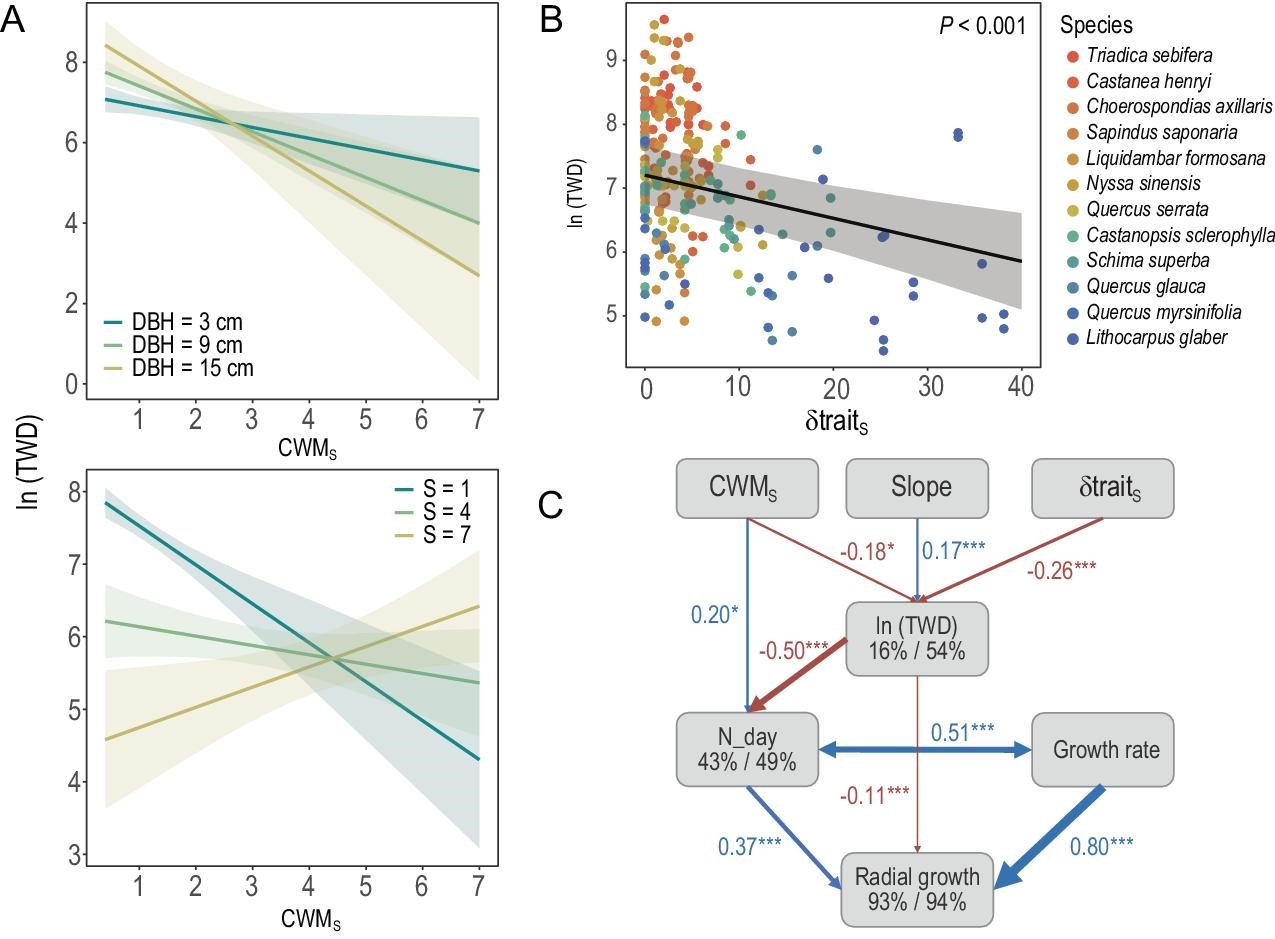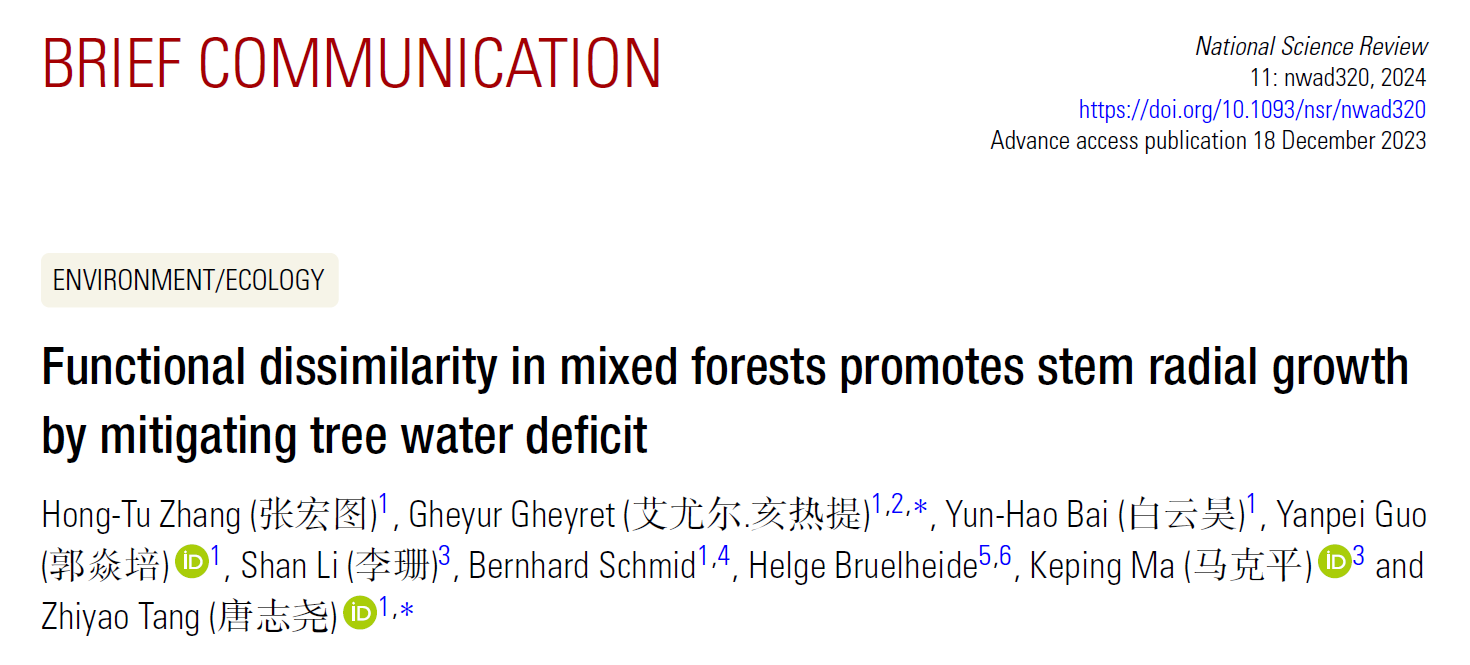Tree growth is a key component of forest ecosystem functioning and is well-known to be limited by water availability. It is acknowledged that composition and diversity of co-occurring tree species can affect tree growth through the resource complementarity. However, direct evidence on the role of water use in diversity-production relationships remains limited.
Based on China’s large-scale subtropical forest biodiversity experimental platform (BEF-China), the research team of Zhiyao Tang from Peking University published a study in National Science Review titled “Functional dissimilarity in mixed forests promotes stem radial growth by mitigating tree water deficit”. This study reveals the water mechanism by which neighbourhood interactions affect tree growth.
The research team installed high-frequency (every 30 min) dendrometer on 160 trees from 12 tree species in a large-scale tree diversity manipulation experiment platform in subtropical China, BEF-China platform. TWD extracted from dendrometer data quantifies the loss of water from elastic tissues and is a proxy reflecting drought stress and water status of trees. The researchers explored the effects of neighbourhood on TWD and the relationships between TWD and stem radial growth of individuals.
The results show that tree water deficit of the focal tree is closely related to the drought sensitivity (S). The community-weighted mean trait value of the drought sensitivity at the neighbourhood scale affects the water deficit of the focal tree, which is regulated by the size and drought sensitivity of the focal tree (Figure 1A). Specifically, the increase of drought-sensitive tree species among the neighbouring trees exacerbates the water deficit of focal trees, especially large trees (Figure 1A). The difference in drought sensitivity (δTraits) between focal tree and neighbouring trees mitigates the water deficit of focal trees (Figure 1B). Species composition at the neighbourhood scale that the average drought sensitivity of neighbouring trees as well as the functional dissimilarity between focal tree and neighbouring trees could mitigate tree water deficit. Furthermore, the reduced tree water deficit indirectly promotes radial growth by increasing the time window for tree growth during the growing season.

Figure 1 Neighbourhood effects on tree water deficit (TWD) and stem radial growth.
In summary, this study provides direct evidence for how tree species composition affects stem radial growth by influencing water balance, thereby explaining the niche differentiation mechanism of water use strategies in the biodiversity-productivity relationship. This result also means that mixed forests of different drought-sensitive tree species can alleviate drought stress and promote growth.
Literature:
Hong-Tu Zhang, Gheyur Gheyret*, Yun-Hao Bai, Yanpei Guo, Shan Li, Bernhard Schmid, Helge Bruelheide, Keping Ma, Zhiyao Tang*. 2024. Functional dissimilarity in mixed forests promotes stem radial growth by mitigating tree water deficit. National Science Review.11(3): nwad320. http://doi.org/10.1093/nsr/nwad320.

